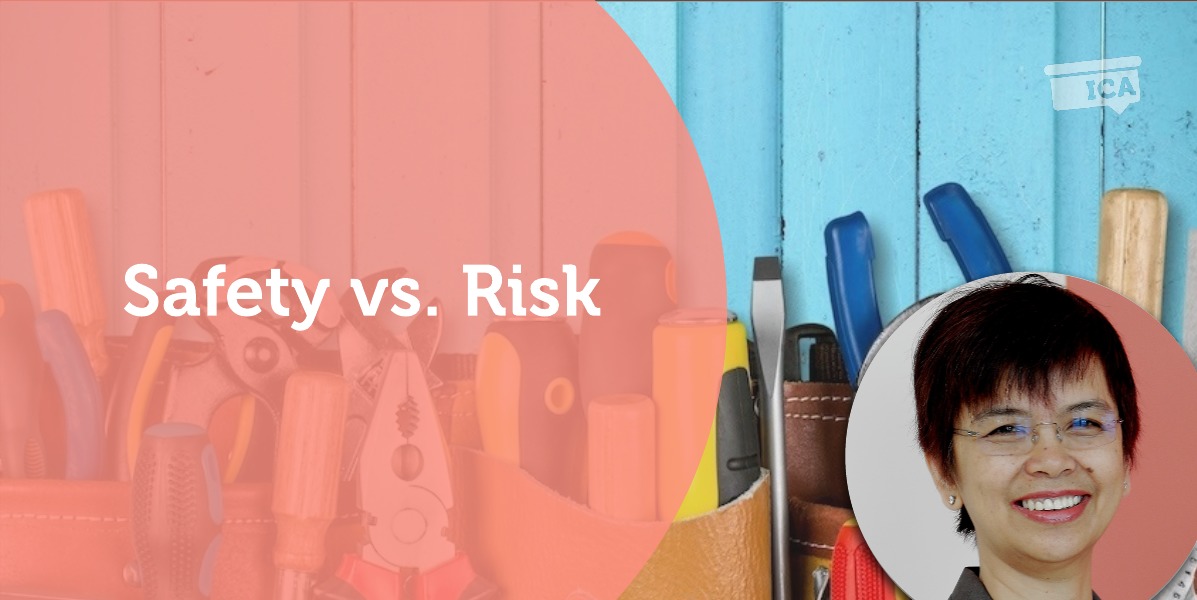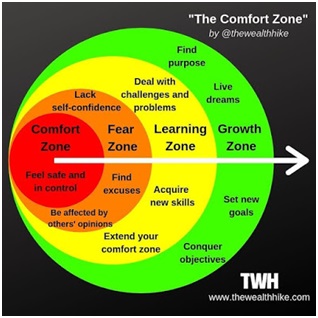 A Coaching Power Tool Created by Maimon Md. Arif
A Coaching Power Tool Created by Maimon Md. Arif
(Transformational Coach, MALAYSIA)
Life is an ongoing process of choosing between safety (out of fear and need for defense) and risk (for the sake of progress and growth). – Abraham Maslow
Safety vs. Risk
Cambridge Dictionary Definition for:
Safety: (a noun) a state in which or a place where you are safe and not in danger or at risk: the condition of not being in danger or of not being dangerous: the condition of not being likely to cause damage or harm: the fact of keeping people safe in a particular place:
Risk:(a noun) the possibility of something bad happening: to take a risk – to do something that might be dangerous:
Human Motivation and Needs

Maslow, in his “Hierarchy of Needs”, stipulates that people are motivated to fulfill their basic needs before moving on to their needs for growth. The need for safety is acknowledged as a basic human need. Safety needs include the security of body, of employment, of resources, of the morality of family, and health.
Safety is an evolutionary need, which is often manifested in what we refer to as the “fight or flight” response. From the minute we wake up, we have to make decisions – do I want to stay in bed or do I want to wake up? On any day of our lives, we make many decisions: decisions to maintain or improve our well-being, physically, spiritually, or mentally. In deciding for self or others and in doing, whether it is for exchange of services or goods, there is still a personal need we are fulfilling. It could be to ensure the safety of others close to us or to make us feel safe in our environment. Most of our decisions and actions are based on needs or desires to sustain or improve our circumstances. Sometimes we make a decision we don’t necessarily agree to, just to avoid a confrontation because we don’t want the risk of jeopardizing our relationship, trust, and/or safety.
Human motivation as explained by Maslow’s “hierarchy of needs” reveals why individuals think first about threats and why they see opportunities as optional extras to be addressed later, if at all. Safety is always connoted in a positive space and the opposite of safety is a risk, a space where something bad/negative will happen.
Staying safe can make you feel stuck.
Risk exposes the potential for failure and failure is painful. It is a human reaction to want to stay safe. Risk-averse people may stay stuck as they are afraid of being hurt, afraid of being vulnerable, and afraid of failing. It is very convenient to not try as the potential of failure is zero. The thinking goes, ‘not failing, I won’t get hurt.’They are stuck in this limiting belief that they have imprisoned themselves in their own safe cocoon. They think they never get hurt, but they will never grow or progress, and in that, it is self-inflicted hurt.

CoachingApplication
My niche is to coach social leaders to grow and elevate their impact to achieve their dream of building a better world.
Anna (not her real name) is a graduate from a top-ranking university, an idealistic and intelligent young adult in her early 30s. Hers is a young family with a very understanding and supportive husband. She quit a well-paying secure corporate job fora social enterprise for the cause for which she is very passionate. Although Anna was brought up in a low-income household, her parents were committed to ensuring that she had all the opportunities for a good education. Being very conscious of their circumstances and her family’s sacrifices for her education droveAnna to be focused on her studies. She set high expectations for herself -success was about performing well in school. She was always a top student and participated actively in many school activities. The same drive followed her through university and she never had any major setbacks in her education. She described herself as a very competitive and hard-working person.
The social enterprise’s works is a very lean outfit where decisions are made on the fly and everything is needed yesterday. Anna couldn’t bring herself to speak out her opinion in the many meetings and discussions even when she felt strongly about the issues. Her nonparticipation in the discussion is bothering her and she finds herself mulling over the missed chance for days. Her lack of confidence to participate in the discussion is eating her. She wants to be able to actively contribute and have a say in the direction and design of the programs and the company’s direction, but what if her opinion is not good enough? Would her colleagues think less of her for coming up with such opinions? What if she embarrasses herself?
 Anna’s story is not unique among young social leaders. Their high expectation of self and their competitiveness ‘paralyzes’ them in their perceived safety zone – a zone where they feel they have control.
Anna’s story is not unique among young social leaders. Their high expectation of self and their competitiveness ‘paralyzes’ them in their perceived safety zone – a zone where they feel they have control.
Getting them to trust the coaching process and to let go of control is the first step to awaken their awareness. There are layers to this ‘lack of confidence’ statement, partnering them to get them to peel the layers to get to the real cause and understanding of underlying beliefs:
Partnering with them to change their perspectives:
Helping them to build a structure on their new perspective:
Man is hardwired to find safety. The motivation for safety is fear and defense. Man is also willing to take risks to grow and progress.
References:
Hillson, D. (2008). Risk management, Maslow, and memetics. Paper presented at PMI® Global Congress 2008—EMEA, St. Julian’s, Malta. Newtown Square, PA: Project Management Institute.
https://www.simplypsychology.org/maslow.html
“Social Leaders are Leaders who devote one’s life and talents to improving society regardless of social standing, wealth, or privilege. A leader is someone who empowers other leaders.” – The Centre for Social Leadership.